




-
Application
- Industry
- Heating industry
- Individual solutions
- Law regulations
- Certification
- Research and development
- Public perception
- Investment map
-
Transport
- Hydrogen buses
- Hydrogen trains
- Special vehicles
- Law regulations
- Certification
- Research and Development
- Public perception
- Investment map
-
Production
- Technology
- Green hydrogen from Renewable Energy Sources
- Grey hydrogen
- Hydrogen production from biomass
- Law regulations
- Certification
- Research and development
- Public perception
- Investment map
-
Transmission, Storage



Cookies
Informujemy, iż w celu optymalizacji treści dostępnych w naszym serwisie, dostosowania ich do Państwa indywidualnych potrzeb korzystamy z informacji zapisanych za pomocą plików cookies na urządzeniach końcowych użytkowników. Pliki cookies użytkownik może kontrolować za pomocą ustawień swojej przeglądarki internetowej. Dalsze korzystanie z naszego serwisu internetowego, bez zmiany ustawień przeglądarki internetowej oznacza, iż użytkownik akceptuje stosowanie plików cookies. Czytaj więcej Polityka prywatności
Production
Electrolisis - key to low-emission economy
Electrolysis produces about 2% of the world's hydrogen, most of it as a by-product of chlorine production. According to the European Commission, electrolysers producing hydrogen from water and RES will be a key technology to enable the transition to a zero carbon economy.The world's largest electrolysers: back to the past
The electrolysers currently operating in the world that produce hydrogen from water and renewable energy are generally low capacity, in the order of a few megawatts. In July 2021 Shell announced the commissioning of Europe's largest electrolyser producing hydrogen from renewable energy in Cologne. The PEM-type electrolyser has a capacity of 10 MW and will produce around 1,300 green hydrogen per year. In the future, the company plans to increase the capacity of the device tenfold.
Linde is also in the race to be the largest electrolyser, having ordered a 24 MW unit for the Leuna plant, which is expected to be ready in the second half of 2022. What both investments have in common is the same British manufacturer - ITM Power, whose plant in Sheffield has increased the production capacity of electrolysers to 1GW per year.
Meanwhile, work on building an even larger electrolyser, powered by hydropower, has been announced by Thyssenkrupp. The installation, which has been ordered by Canada's Hydro-Québec, will be built in Varennes and is expected to have a capacity of 88MW, allowing it to produce 11,000 tonnes of hydrogen per year. The investment will be commissioned in 2023.
Will it be the largest electrolyser in history? Well, no. For several decades, even more powerful devices operated in Norway, taking advantage of the availability of large amounts of cheap energy from hydroelectric power plants. Green hydrogen was produced in a 167 MW electrolyser in Rjukan between 1940 and 1988 and a 135 MW electrolyser in Glomfjord between 1953 and 1991. Both supplied the hydrogen needed for fertiliser production. The manufacturer of the electrolysers was Nel Hydrogen, still one of the market leaders in hydrogen technology.
What are the benefits of using electrolysers?
When weather conditions are very favourable, the energy generated by wind farms or solar power plants is difficult to distribute on the grid.
The use of electrolysers opens up new opportunities - on the one hand, for the development of RES and, on the other, for the increase in hydrogen production. Hydrogen as an energy store can help to stabilise the electricity system using RES, whose disadvantage is the lack of flexibility.

Increasing the scale of application of electrolysers will lead to an increase in their capacity and efficiency and a decrease in prices.
Alkaline and polymer (proton exchange membrane - PEM) electrolysers are the most common and available. The most efficient, but more expensive and at an early stage of development, are solid oxide electrolyzers (SOEC).
Alkaline electrolysers typically operate at a temperature of about 80°C and an operating pressure of 3 MPa (i.e. about 30 bar). They typically achieve efficiencies of around 50-70%. The technology is commercially available, as well as being proven in large modules at, for example, Rjukan and Glomfjord. In terms of degree of development, it is the most advanced and potentially cheap, as it does not require the use of noble materials.
The advantages of PEM electrolysers are simplicity of construction, high flexibility of operation, high efficiency and quick adaptation to load changes. Moreover, their advantage over alkaline electrolysers is short start-up time, high flexibility of operation in the range from 0 to 100% of rated power and the possibility of short-term overloading up to 160%. PEM electrolysers operate at a temperature of 50-80ºC and an operating pressure of 3-8 MPa (i.e. approximately 30-80 bar). A polymer membrane for proton exchange is directly connected to electrodes coated with a catalyst. A platinum catalyst is the most effective, although cheaper nickel electrodes are also used. Disadvantages of PEM include high investment costs and a shorter lifetime due to the durability of the electrolyte.
The third technology, SOEC is still at the research stage. High level of efficiency: 80-90 percent is provided by a ceramic membrane, usually made of zirconium oxide doped with yttrium oxide. The electrolysis temperature is 850-1200 °C and the pressure is 1 bar. The biggest disadvantages of this technology are the high investment costs, the low maturity of this technology and the rapid degradation of the material and its limited durability due to the high operating temperatures. Because of the sensitivity of ceramic materials, they should operate continuously, which is not always possible with RES, which depend on the weather.
The development of electrolysers is also ongoing in Poland. "Polish electrolyser" in cooperation with the Institute of Energy and the AGH University of Science and Technology intends to launch Lotos Group. A pilot installation will be built in Jasło, based on solid-oxide electrolysers. The value of the "Vetni" research and development project is nearly PLN 10 million. The installation will be integrated with the refinery process, which will supply steam for hydrogen production. New materials will be used for the air electrode to reduce cobalt content.
The installation will deliver approximately 16kg of 99.999% pure hydrogen per day.
Wood McKenzie, Green hydrogen pipelines more than doubles in five months, 6.03.2020.
Komisja Europejska Czysta planeta dla wszystkich, https://eur-lex.europa.eu/legal-content/PL/TXT/PDF/?uri=CELEX:52018DC0773&from=pl
J. Piskowska-Wasiak, Doświadczenia i perspektywy procesu Power to Gas, „Nafta-Gaz”, nr 8, 2017.
The future of hydrogen, International Energy Agency, Paryż, 2019
Redakcja





